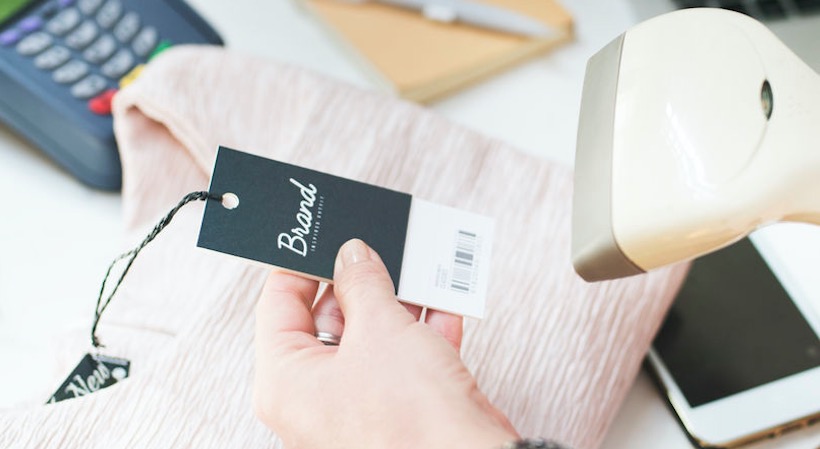In the age of the smartphone, consumers carry a computer and virtual shopping cart in their pockets at all times. Never before has there been such an opportunity for retailers to connect artisans, specialty foods purveyors, niche clothing boutiques and other startup brands with specific shoppers around the world.
While retailers can carry a wide product selection, they are also under pressure to earn the trust of empowered consumers. Every retailer, especially those with an e-commerce component, is increasingly responsible for making sure the products they offer are credible. This means adhering closely to product setup requirements, or risking having their product listings hidden, delisted, or mistaken for counterfeit goods.
One of the most critical steps to prove your product is credible is to obtain authentic UPC barcodes that link your product with your company. Some barcode sellers may promise cheap and quick access to UPCs, but many startups have found those barcodes may have been used before, or they may identify the product as coming from another company.
To help entrepreneurs navigate the product identification process, four small brands offered advice for barcoding, and shared how the system behind the barcode has benefits beyond just checking off an item on a retailer to-do list.
StartupNation exclusive savings on the Dell products that power your business: Save Now
The first step toward credibility
One of the keys to making sure you are using authentic UPC barcodes is to first gain a basic understanding of the system behind them.
You’ll often see the acronym “GTIN” cited on retailer guidelines. GTIN stands for Global Trade Item Number® which is the unique product number encoded into a UPC barcode that also appears below the symbol’s black lines and spaces.
Getting a GTIN starts with obtaining a license from GS1 US. GTINs are universally accepted by many retailers, distributors and other supply chain participants. They help them understand what your product is and identifies you as the brand owner in various types of inventory management systems. They identify your product at each stop it makes from the manufacturing site to point of sale to the customer’s doorstep.
“When applying to Walmart for consideration as a supplier, one of the requirements was that my product UPCs were registered under my own company name, and not from a third party,” Jim Richards, CEO of mediadogg Software LLC, said.“This helped me realize that my product needed this type of proof that it was a credible product.”
Related: The Benefits of UPC Barcodes for Your Small Business
Preparing for future growth
During the excitement of a product launch, it’s easy for entrepreneurs to get overwhelmed by short-term tasks and opt for the easy route. However, it’s important educate yourself on how the seemingly simple act of barcoding and compiling product information can contribute to your company’s growth.
Bear’s Breath, a burgeoning spicy ketchup brand, discovered the potential for expansion when products were identified properly and their barcodes were set up the way retailers want.
“Once we started working with a major regional grocer, I realized we needed to get our barcodes set up so that we could take our products to another level. We could create a six-pack or gallon sizes, and they could all have their own barcodes,” Taylor Rausch, Bear’s Breath’s founder, said.
“I had thought to myself, ‘Am I going to have to revisit this process every single time that I work with a new retailer?’ Using these universally-accepted barcodes and identification numbers means I don’t have to—which is great news, (and) has allowed me time to do other things that are more beneficial to the business,” he continued.
Shenice Gross, CEO and founder of Alkali60, also began to see how UPC barcodes could help her prepare for future expansion:
“In the next few years, we have plans to offer different flavors and sizes to the market, so our license covers 10 UPC codes in preparation for that expansion.”
Sign Up: Receive the StartupNation newsletter!
Giving the consumer the full picture of your product
In order to make your mark and compete alongside major brands, many startups have found that the more information they can provide to retailers, the better their chances are of standing out.
For the B2B digital signage company, XOGO, having authentic barcodes are just one of the ways they prove they are credible with retailers.
“Unless you’re one of those enormous, household names in technology, you really need to give customers as much information as possible in order to let them know that your product is real and viable,” Chad Brown, founder of XOGO, said. “Having UPC codes for our hardware helps customers discover our products online, protects us against fraud, and streamlines the selling process through online channels like Amazon.”
Going beyond barcodes, Bear’s Breath uses its full product details and clean ingredient listing to challenge the way consumers typically think about condiments:
“In general, more grocery stores are noticing that customers are shifting their preferences and that there’s a nutritional awakening happening,” Rausch said. “Being uniquely identified in the marketplace is the baseline entry for us–we’re looking to disrupt what consumers have always seen as normal.”
Ultimately, it’s a competitive marketplace where shoppers expect retailers to provide the best brands to suit their needs.
New, startup brands looking to take advantage of this opportunity must meet retailer requirements in the short-term, while keeping an eye on long-term growth. And that all starts with properly identifying your retail product with a UPC barcode.
Originally published Feb. 17, 2020.






